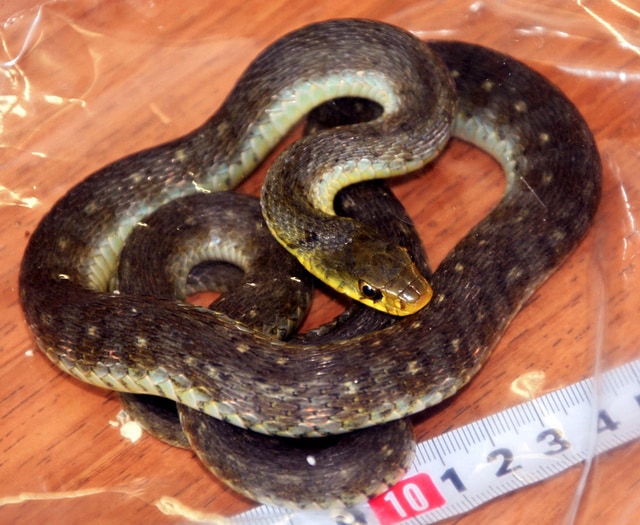Cases
The snake Yamakagashi, which was said to be non-venomous, in fact, there were cases of death. Highly effective in antivenom.
It is prohibited to reprint without permission from the Asahi Shimbun.
The approval number is “24-2714”.
Living with Patients
Kenji Tamura November 12, 2023 12:01 pm
Yamakagashi is a typical venomous snake found north of Kyushu in Japan, along with pit vipers. Since they feed on frogs, they are often found in and around rice paddies.
According to Jun Sakai, a senior researcher at the Research Institute for Japan Snake Tribes, Yamakagashi was once considered non-toxic. The fangs are small and slightly behind the mouth, and it is said that the poison hardly enters the body after a momentary bite. In fact, in the past 50 years or so, there have been 45 cases of Yamakagashi bites, and five people have died.
The main symptoms of pit viper bites are pain and swelling, while in
the case of Yamakagashi, bleeding from gums and old wounds, and
subcutaneous hemorrhages are more likely to occur.
Toxins cause
blood to clot, causing blood clots to occur here and there, while
bleeding is more likely to occur. However, it is said that the
details of the core components of the poison are not well known.
If you are bitten, Sakai recommends that you rest as much as possible even if you do not have symptoms and seek medical attention as soon as possible. If you can take a picture of the bitten snake, it will help you deal with it.
In the treatment of severe cases, a technique called “serum therapy”, which injects an antivenom into the body that neutralizes the poison, is highly effective. However, antivenom is made from the serum of weakened venom injected into the horse multiple times, so it is necessary to be careful about allergic reactions.
After recovering, Mr. A, who was bitten by Yamakagashi, donated his own blood for research. It is estimated that the blood contains multiple types of proteins called “antibodies” that neutralize the poison of Yamakagashi.
According to Dr. B, a researcher at the National Institute of Infectious Diseases, if the core components of Yamakagashi venom are elucidated, it will be possible to produce a type of therapeutic drug called a “monoclonal antibody” against this drug using antibodies from recovered patients. There are few worries about allergies, and a research group in which Dr. B participates is working on development.
Mr. A became the first convalescent patient to donate blood. In the future, it may lead to the rescue of many people who have become seriously ill due to the bite of Yamakagashi in the same way. (Kenji Tamura)


If you have any comments or feedback, please send them to iryo-k@asahi.com with your name and contact information. (Kenji Tamura)